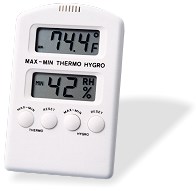Inkjet printers can be used as a replacement for a high priced imagesetters and low quality laser printers. To make positives with an inkjet printer, you must have an absorbent coating on clear film. Ulano Pigment Inkjet Film is designed to make positives.
Q1. I printed a positive yesterday and when I exposed my stencil today, some of the ink came out of the film and stuck to the screen. Now this positive is ruined and I can't use it again.
A1. Alas, overnight does not mean dry. The fact that the ink was able to be pulled out of the film is proof the ink wasn't dry. Ink can't move if it isn't wet.
Modern inkjet inks are water based and still need time to evaporate and dry, just like a screen stencil. Your stencil and the nano porous inkjet film have a strong capillary action, so if either holds any moisture, the ink can re-wet. In a stencil, this moisture is invisible and will interfere with cross linking, but when ink re-wets and bleeds, you can actually see the bad results.
The required operating
conditions for the best results is: Temperature for optimum performance
60° – 80° F (15° – 25° C).
Required humidity for optimum performance 40% – 60% Rh.
 A
dehumidifier or air conditioned room will achieve the best drying conditions.
Start with the purchase of a hygrometer to measure relative humidity, (Rh%).
A
dehumidifier or air conditioned room will achieve the best drying conditions.
Start with the purchase of a hygrometer to measure relative humidity, (Rh%).
Ink is designed to dry slow
Inkjet ink manufacturers need to balance nozzle maintenance and the desire
to have an ink that dries fast after printing. Glycol or glycerol humectants
are added to the water based ink vehicle to keep the pigments in suspension,
retard drying, and prevent nozzle blockage. This slows the evaporation
of the inkjet ink in your art room.
People in the inkjet signage industry have long ago noticed that they must let photo papers dry for several days before they can heat laminate these papers. If they are heat laminated too soon, the trapped water and glycol will immediately turn to steam and create bubbles trapped between the laminate and the paper. Premium (heavy or thick) papers may require up to two weeks to thoroughly dry
Nano porous/micro porous Ulano Pigment Inkjet Film allows the solid particles in the pigment EPSON ink to penetrate the coating and appear dry to the touch, yet be wet inside. Dry as a tomato. You still need a dry stencil and dry positive or the combination of vacuum and moisture will damage your positive when the ink pulls out.